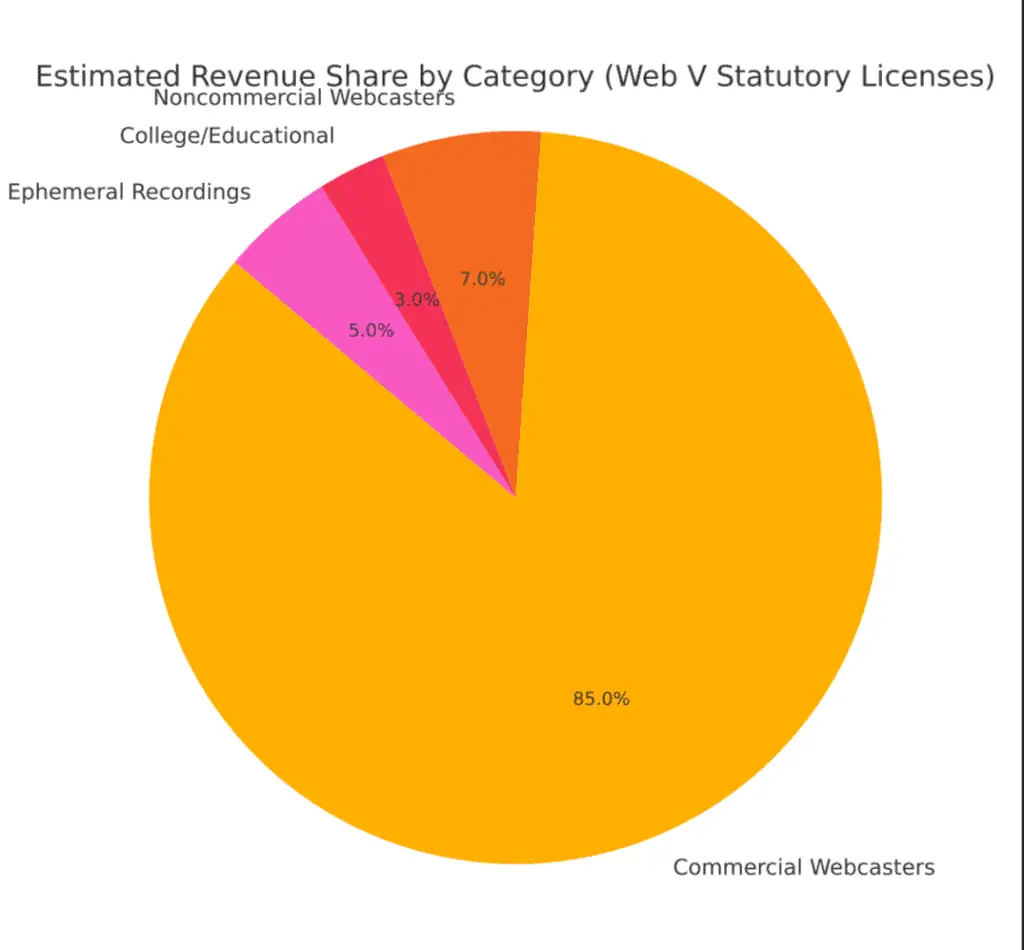New CRB Streaming Royalty Rates are a Big Win for Artists
Artists just scored a major win with proposed new CRB streaming royalty rates. These overdue increases and other changes supported by SoundExchange may mark a turning point in how creators are valued in the digital economy.
New CRB Streaming Royalty Rates Under Web VI are a Big Win for Artists
from The Trichordist
In a landmark development for recording artists, the Copyright Royalty Board (CRB) has proposed new royalty rates under the “Web VI” proceeding, covering the period 2026 through 2030. These rates govern how much commercial broadcasters must pay for streaming sound recordings under the statutory licenses set forth in Sections 112 and 114 of the U.S. Copyright Act.
The new rates reflect the culmination of years of advocacy by SoundExchange and artist-rights groups and represent another meaningful upward adjustments in royalty rates. The Copyright Royalty Judges have adopted a meaningful schedule of increases—both in per-stream royalties and in the minimum annual fees webcasters must pay—designed to better align statutory streaming compensation with market realities. (Unlike streaming mechanical rates, webcasting royalties are a penny rate per play.)
A Clear Victory in Numbers
| Year | Web V Per-Performance Rate | Web VI Per-Performance Rate | % Increase Over Web V | Web V Min. Annual Fee | Web VI Min. Annual Fee / % Increase |
| 2026 | $0.0021 | $0.0028 | +33.33% | $1,000 | $1,100 / +10.00% |
| 2027 | $0.0021 | $0.0029 | +38.10% | $1,000 | $1,150 / +15.00% |
| 2028 | $0.0021 | $0.0030 | +42.86% | $1,000 | $1,200 / +20.00% |
| 2029 | $0.0021 | $0.0031 | +47.62% | $1,000 | $1,250 / +25.00% |
| 2030 | $0.0021 | $0.0032 | +52.38% | $1,000 | $1,250 / +25.00% |
These increases aren’t merely arithmetic; they represent a philosophical shift in how creators are valued in the digital economy.
Structural Adjustments
Beyond the rate hikes, the CRB has adopted operational changes proposed by SoundExchange to royalty reporting and distribution. For example:
– The late fee for audit-based underpayments is reduced from 1.5% to 1.0% per month, capped at 75% of the total underpayment.
– Starting in 2027, webcasters using third-party vendors must obtain transmission and usage data or contractually guarantee its delivery.
– If a commercial broadcaster fails to file a report of use, SoundExchange may now distribute royalties based on proxy data.
These tweaks aim to close loopholes and increase reliability in royalty tracking—critical steps toward a more transparent system.
The Road Ahead
While the Web VI proposal rule will be final after June 16, 2025, it is already being hailed as a pivotal win by artist advocates. For too long, streaming-era economics have undervalued creators in favor of platforms and intermediaries.
This ruling is a recognition—long overdue and hard-won. When finalized, the Web VI clear and easy to understand rates and terms will not only ensure a greater financial contribution for featured and nonfeatured recording artists and rights holders, but also reassert the foundational principle that creators should be paid fairly when their work fuels billion-dollar platforms.
For artists and musicians navigating a shifting industry, the law is catching up with the market it governs on the side of the creators who drive the business.

Of course, don’t forget that some of these same broadcasters who pay under the statutory license for streaming do not pay anything to artists for over the air broadcast of terrestrial radio for the exact same plays of the exact same records–another reason that Congress must finally pass the American Music Fairness Act. That’s why we support the #IRespectMusic campaign and the MusicFirst Coalition.